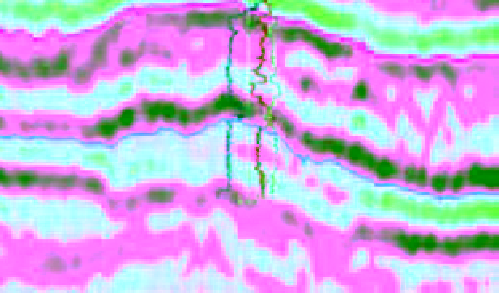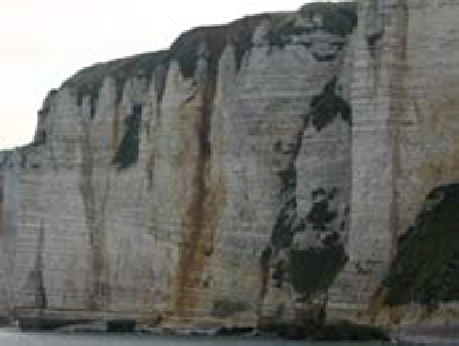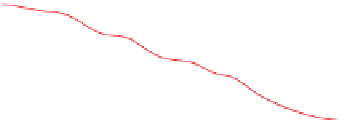Geoscience Reference
In-Depth Information
(A)
(B)
5
00m
(C)
100m
Fig. 17.
Comparison between the (A) seismic section of Fig. 5B and (B) channel development as observed at the cliffs of
Etretat, Normandy, France. Vertical scale in (A) is approximate and estimated from well 2/4-12. The outcrops sketch in
(C) has been rescaled to match approximately to the seismic. The height of the cliffs is 40 m. The photograph shows the
northern channel margin, while (C) the 500 m wide correlation sketch (from Lasseur, 2007) shows the southern margin. The
total width of this channel in outcrop is 1 km.
biostratigraphic evidence. At this stage, the cur-
rent may still have been active but apparently was
not powerful enough to erode, winnow and re-
suspend large parts of the allochthonous chalk
deposits. Downslope mass movements originating
from the adjacent highs and channel margins
consist of chalk material with various degrees of
lithification, implying softground or hardground
development in the source areas (e.g. Valhall Field
on the Lindesnes Ridge; see Kennedy 1980; Sikora
et al
., 1999). During the initial phase of channel
infill (upper channel-fill unit low porosity interval
in Fig. 14) the current may have been capable of
redistributing part of the allochthonous sediments
within the channel, thereby thinning the accumu-
lated debris flow deposits.
In the overlying interval of the upper channel-fill
unit, the mass-flow deposits emplaced in the
channel, recognised in wireline logs as high-
to-low porosity alternations, show a thickening-
upward trend. This may reflect a gradual decline
in the bottom current strength and its erosive
potential. The current was not capable of removing
the allochthonous material and this lead to the
preservation of thicker debris flow deposits.
Analogy can be made with the channels and
channel-fill seen at Etretat (cf. Quine & Bosence,
1991) where waning of the current caused gradual
infilling of the channel by progressively thicker
succession of pelagic and allochthonous chalks
associated with a gradual decline of the channel
margins inclination.
Accumulation of mass-flow deposits occurred
both within the channel axis and on the marginal
areas of the channel. Progressive emplacement of
gravity-flow deposits gradually filled the channel
(Fig. 16). Once filled, gravity-flows were not
confined any longer in the channel depression
and downslope mass movements could by-pass
the earlier channel feature and deposit over a
wider area. The morphology of the channel
allowed the capture of allochthonous material
and hence the channel allochthonous infill (upper
channel unit) is relatively thicker compared to
coeval intervals in adjacent areas (Fig. 15). The
localised bottom-current activity completely
































Search WWH ::

Custom Search